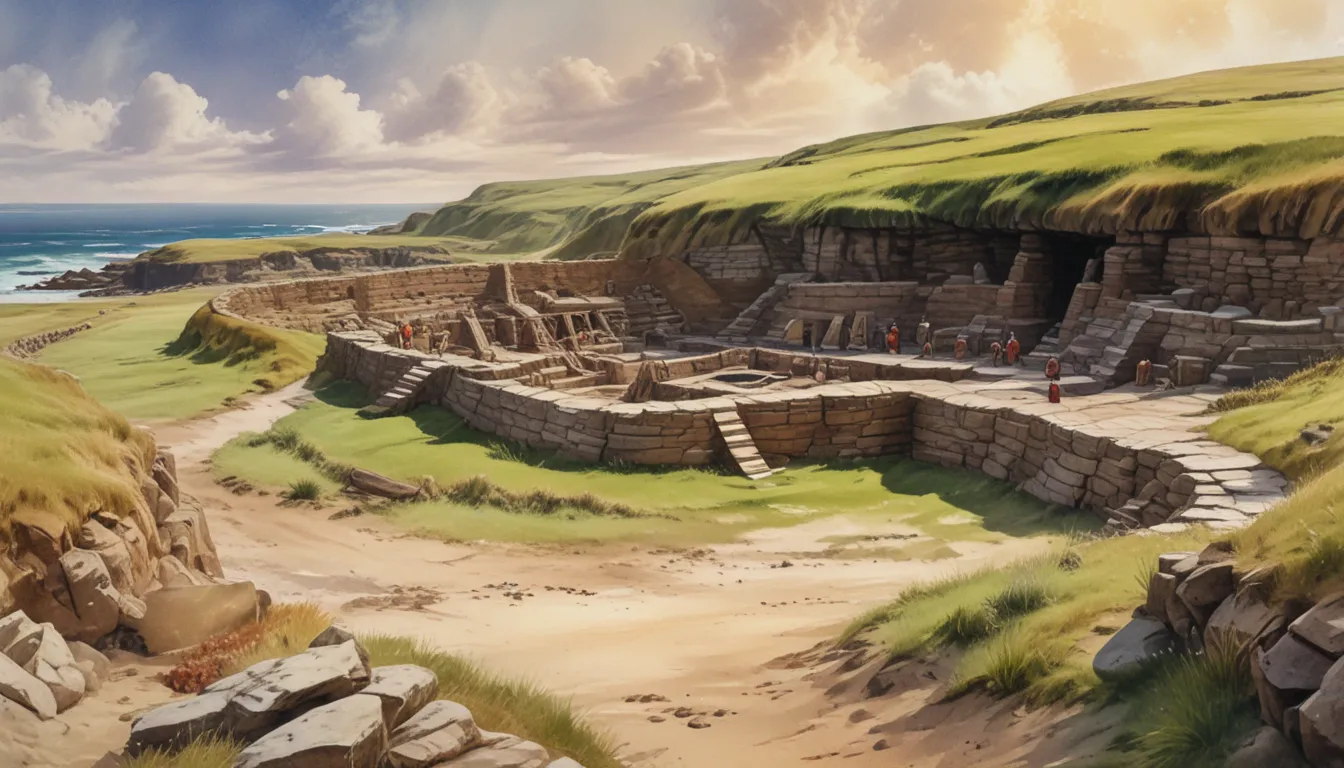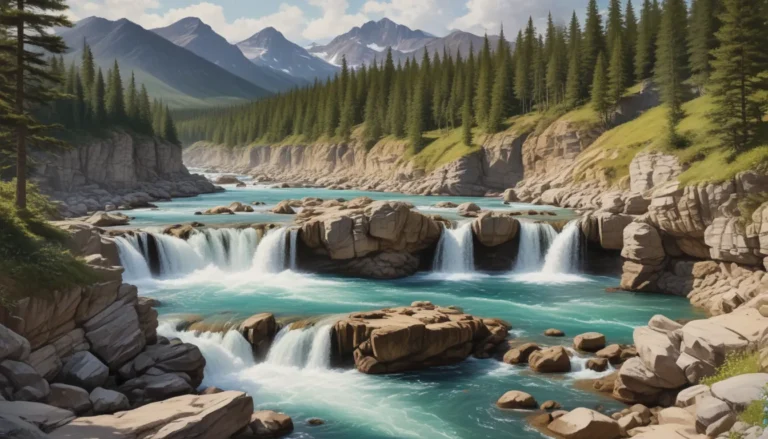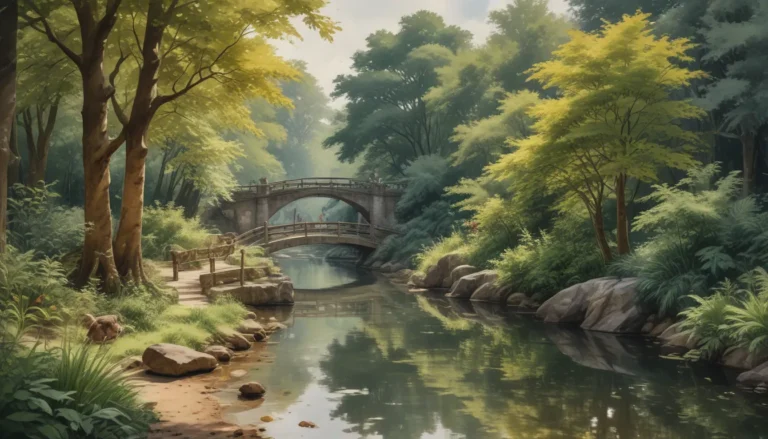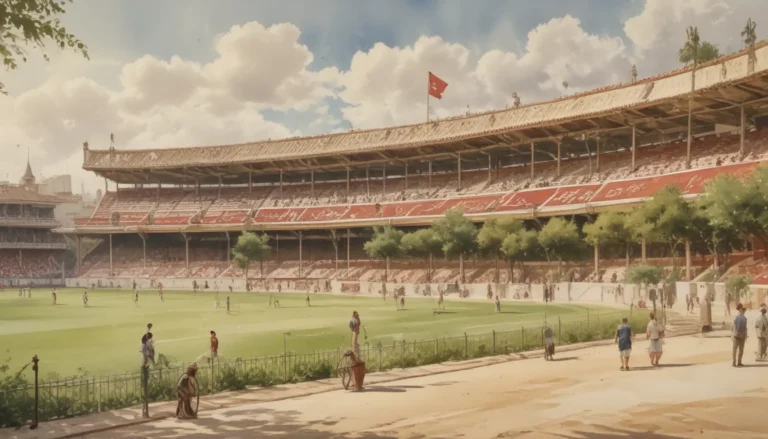The images in our articles are for illustrative purposes only and may not exactly match the content. They are intended to capture your interest and complement the text, not to replace it.
Welcome to the captivating world of Skara Brae, an ancient Neolithic settlement nestled on the mesmerizing west coast of Mainland, Orkney in Scotland. With its well-preserved stone houses and furniture dating back over 5,000 years, Skara Brae offers a fascinating glimpse into the lives of our ancestors who thrived in this remarkable village. Join us as we unravel 10 astounding facts about Skara Brae that showcase its historical significance and architectural marvel, taking you on a journey back in time to explore the secrets of this extraordinary archaeological site.
Unveiling Skara Brae’s Secrets
Step back in time and immerse yourself in the wonders of Skara Brae, a remarkably well-preserved Neolithic village located on the picturesque Orkney Islands in Scotland. Dating back over 5,000 years, this ancient settlement provides a unique window into the daily lives of its inhabitants, offering insights into their community planning and architectural achievements.
A Stormy Discovery
The mysteries of Skara Brae lay hidden until a tumultuous storm in 1850 exposed the ancient site, unveiling a complex network of stone structures and artifacts. This serendipitous discovery transformed Skara Brae into a UNESCO World Heritage Site, attracting awe-inspired visitors from across the globe eager to uncover its secrets.
An Ancient Community
At its zenith, Skara Brae was home to a tight-knit community of around 50 to 100 individuals who dwelled in distinctive stone houses connected by covered walkways. This early form of community planning and architecture showcases the innovative spirit of the Neolithic settlers who called Skara Brae their home.
Constructed in the Neolithic Era
Built during the Neolithic period, also known as the New Stone Age, Skara Brae emerged as communities transitioned from a nomadic lifestyle to settled farming practices. This pivotal era marked a significant shift in human civilization, laying the groundwork for societal development and cultural advancements.
Stone Furniture and Sophistication
Delve into the stone houses of Skara Brae to discover an array of remarkably intact furniture, including stone beds, shelves, and hearths. The intricate design and craftsmanship of these stone artifacts hint at a level of sophistication and creativity unparalleled in their time.
Abandonment and Mystery
After centuries of habitation, Skara Brae was mysteriously deserted around 2500 BCE, leaving behind a trove of unanswered questions. The village lay buried under sand, its secrets concealed until the fateful storm that unraveled its ancient mysteries in the 19th century.
Insights into Ancient Daily Life
The meticulously preserved structures of Skara Brae offer a mesmerizing glimpse into the daily routines of its ancient inhabitants. Archaeologists have pieced together a vivid mosaic of how these early settlers lived, worked, and interacted, shedding light on their customs and societal dynamics.
Significance in European History
Skara Brae stands as one of Europe’s most vital Neolithic sites, revered for its well-preserved structures and artifacts that unveil the early history of human settlement and cultural evolution in the region. Its enduring legacy continues to captivate scholars and history enthusiasts alike.
Ingenious Engineering
Nestled in a region known for its harsh climate, Skara Brae’s design reflects ingenious engineering strategies to withstand the elements. The low-lying stone structures surrounded by earth mounds provided insulation and protection, showcasing the resourcefulness of its ancient architects.
A Time Capsule of the Past
Visiting Skara Brae is akin to embarking on a time-travel adventure. As you wander through the ancient village and witness remnants of Neolithic life, a sense of wonder and appreciation for the resilience and ingenuity of our ancestors washes over you, connecting you to a bygone era.
Embrace the Wonders of Skara Brae
Skara Brae’s rich history illuminates the vibrant tapestry of our human heritage, offering a tantalizing glimpse into the lives of our ancient predecessors. The 10 astounding facts about Skara Brae shared in this article merely scratch the surface of its profound historical significance and cultural value. From its enigmatic origins to its enigmatic abandonment, Skara Brae beckons adventurers and history buffs to delve deeper into its mysteries and unravel the untold stories of its past.
FAQs
Q: How old is Skara Brae?
A: Skara Brae dates back to around 3180 BCE to 2500 BCE, making it over 5,000 years old.
Q: Why is Skara Brae significant?
A: Skara Brae offers valuable insights into Neolithic life and showcases advanced architectural achievements, providing evidence of early community planning.
Q: How was Skara Brae discovered?
A: Skara Brae was accidentally unearthed in 1850 when a fierce storm eroded the sand dunes covering it for centuries.
Q: What are the main features of Skara Brae?
A: Skara Brae comprises ten well-preserved stone houses connected by covered passages, along with various household items and furniture.
Q: Why is Skara Brae called “the Pompeii of the North”?
A: Skara Brae earned the moniker “the Pompeii of the North” due to its remarkably preserved snapshot of ancient life akin to the ruins of Pompeii.
Q: What caused the abandonment of Skara Brae?
A: The exact reasons for Skara Brae’s abandonment remain unknown, with theories suggesting climate change, coastal erosion, or other external factors as potential causes.
Q: Can you visit Skara Brae?
A: Yes, Skara Brae is open to the public, welcoming visitors to explore the ancient village and delve into its rich history through informative exhibits and guided tours.
Q: Is Skara Brae a UNESCO World Heritage site?
A: Yes, Skara Brae is a designated UNESCO World Heritage site since 1999, acknowledging its outstanding universal value and historical significance.
Q: Are there similar Neolithic sites in Scotland?
A: Scotland boasts several other Neolithic sites, including Maeshowe, the Ring of Brodgar, and the Standing Stones of Stenness, all nestled in the Orkney Islands.
Q: Can you see artifacts from Skara Brae?
A: Yes, visitors can view a plethora of artifacts unearthed at Skara Brae, ranging from tools and pottery to decorative items, displayed at the nearby visitor center.
Embark on a journey of discovery and enlightenment as you unravel the mysteries of Skara Brae and other ancient wonders around the globe. Each destination holds a treasure trove of history and heritage waiting to be explored, inviting you to step into the shoes of our ancestors and witness the marvels of their ingenuity and resilience. Join us on this captivating voyage through time and relish in the wonders of our shared human past.






